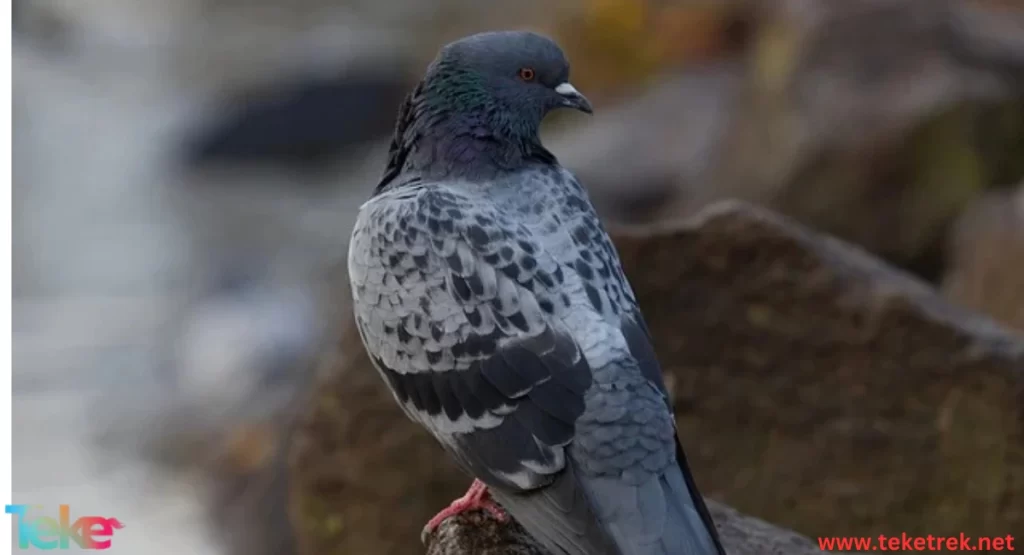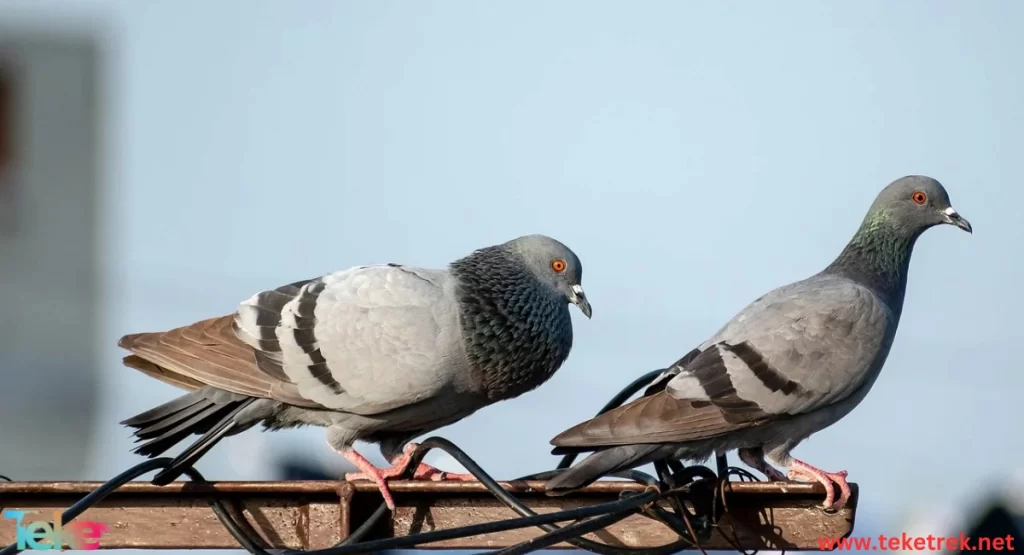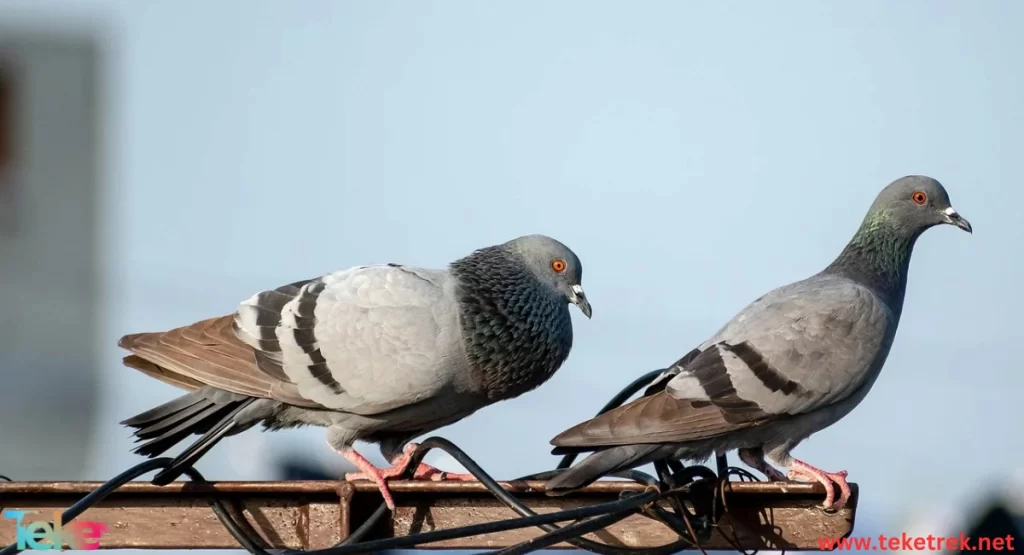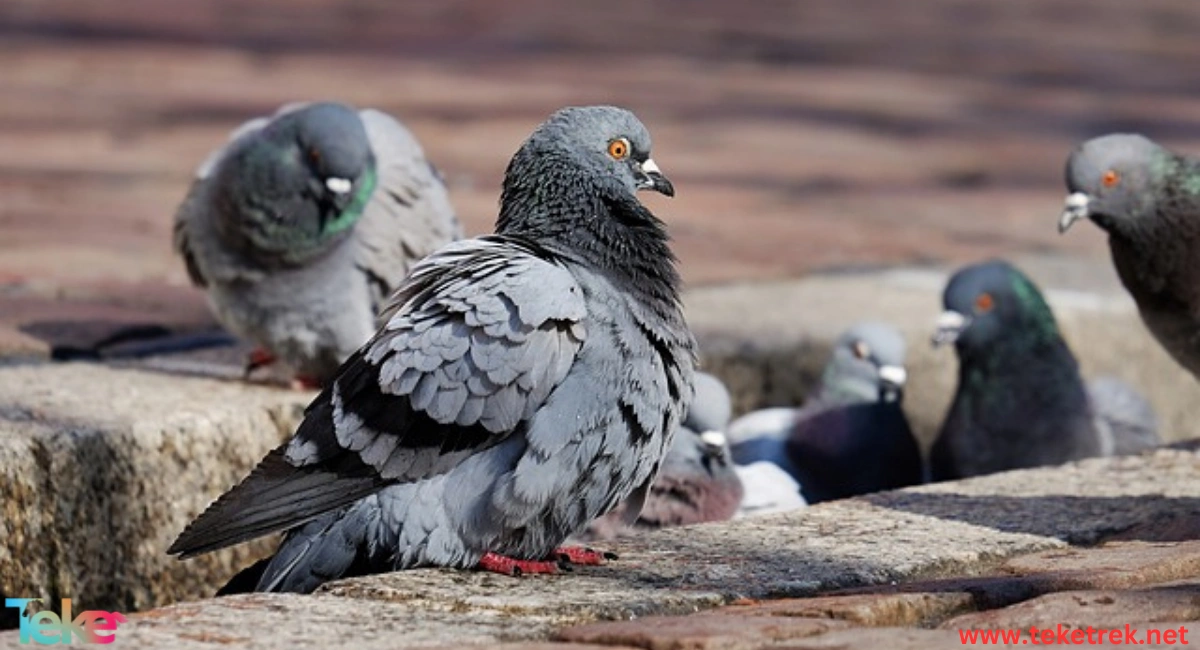The homing pigeon is considered one of the bird species that had a significant impact on human life throughout history, especially during times of war, as its ability to carry messages between different areas was utilized.
Poets, both Arab and foreign, have praised these birds because they helped them convey their voices to their loved ones. However, today, city pigeons are often viewed as a nuisance primarily due to their droppings. People’s perceptions of them vary, as some consider homing pigeons to be lovely animals while others see them as pests. Below we talk about it on the Trektek website we will discover more.

How is homing pigeon training conducted?
- Training homing pigeons involves separating them from their original location, typically their nests, and relocating them to another area. This process programs the pigeon to return to its original location from various release sites.
- Homing pigeons rely on visual cues, such as landmarks, to gradually develop a known path back to their home base. Therefore, people used to manually transport large numbers of pigeons in one direction before they could be released on their own to carry messages.
- Once a message is written and stored, the homing pigeon is released to return home, thereby delivering the message and bypassing traffic, natural disasters, and human error.
How can homing pigeons carry messages?
- The homing pigeon’s ability to carry messages is attributed to a natural ability known as magnetoreception, which allows it to detect and orient itself based on magnetic fields. Humans lack this ability, but many bird species possess varying degrees of this skill. Therefore, wild pigeons showing the most effective ability have been bred to create strong and reliable homing pigeons.
- Interestingly, it has been found that homing pigeons are more accurate in navigating long distances north and south rather than east and west, due to the natural orientation of magnetic fields flowing between the North and South Poles.
What is the reason behind naming homing pigeons with this name?
“Zajal” is a word that means “messenger” or “transmitter.”
It’s suggested that the naming of homing pigeons is derived from the Arabic verb “zajala,” which means “to send” or “to throw.” Therefore, “homing pigeon” can be understood as the pigeon sent or transmitted, as it was used to convey messages between different areas in ancient times.
The Importance of Homing Pigeons
- The origin of homing pigeons traces back to their wild ancestors. Over generations, these pigeons were selectively bred due to their extraordinary homing instinct. While their wild counterparts still exist, homing pigeons are the product of selective breeding, harnessing their navigational abilities for human purposes.
- Pigeons have played significant roles as food sources, pets, sacred animals, carriers of messages, and more for thousands of years.
- Ancient Egyptians kept vast quantities of pigeons, sacrificing tens of thousands at once for ritualistic purposes.
- Introduced to the Americas about 400 years ago, they began spreading across American regions. Around the eighteenth century, interest in fancy pigeons grew, and breeders greatly expanded the scope of pigeon varieties.
- Originally bred from wild pigeons, homing pigeons are distinguished by their exceptional homing instinct. They were trained as messengers to convey messages, forming an important means of communication during wars. These birds possess remarkable navigational abilities, returning to their homes from distant places.
- The contribution of homing pigeons to military communications underscores their significant role in shaping historical events.
Physical Characteristics of Homing Pigeons
- Homing pigeons vertable animal resemble wild pigeons in size and appearance.
- They lack the vibrant colors and patterns in other pigeon species, as they have been bred for their navigational abilities rather than decorative features.
- Homing pigeons are characterized by a curved and uplifted head. Additionally, their eye color is red or olive green, with a short and proportionate neck to the shoulders.
- Their beak is thin and black. Their jaws are strong, with straight edges, and their wings are short and broad. The tail is black and somewhat long.
What do homing pigeons eat?
- Although pigeons are inherently herbivorous animals, they have adapted over the years to consume a wide and varied range of foods. Homing pigeons heavily rely on food discarded by humans, including bread, rice, and meat. Their natural diet includes berries, seeds, fruits, nuts, and vegetables.
- Insects consumed by pigeons, whether in cities or forest habitats, include ants, flies, beetles, as well as spiders and earthworms.
- Pigeons kept as pets or raised in coops often have a healthier and more controlled diet than their wild counterparts. This typically consists of a mixture of seeds, fruits, nuts, and vegetables.
- Initially, pigeon chicks are fed a substance known as “crop milk,” which is a secretion produced in the adult pigeon’s crop and regurgitated into the mouths of their chicks. Crop milk is high in fat and provides the chicks with all the concentrated nutrients they need for rapid growth and early healthy development.


Reproduction of Homing Pigeons
- Homing pigeons share similar reproductive behaviors with their wild counterparts. These birds lay eggs in their nests and care for their offspring.
- Pigeons fiercely protect their eggs, and in some cases, go to great lengths to safeguard their laid eggs. It’s known that they seek revenge on those who interfere with their reproductive process. Newly hatched pigeons are called squabs or chicks.
- While their reproductive behaviors are not different from other birds, domestication by humans has allowed for the management and monitoring of their breeding for specific traits related to homing ability.
- In the case of homing pigeons, humans select breeding partners and provide suitable conditions for these birds, including constructing artificial nests and monitoring them. Sometimes, alternatives to pigeon milk produced by the parent birds are provided by males with artificial substitutes.
- Homing pigeons, as a domesticated group, still exist. However, their role has shifted from being crucial messengers in wars to primarily participating in hobbies like pigeon racing. Some continue to breed and care for them, preserving their connection to their historical significance.
In conclusion, with the advancement of communication methods and the human ability to communicate through mobile phones and the internet, there is no longer a need to breed homing pigeons. Therefore, they have returned to their natural life as wild birds, nesting, foraging for food, and spending their days like any other ordinary bird.






